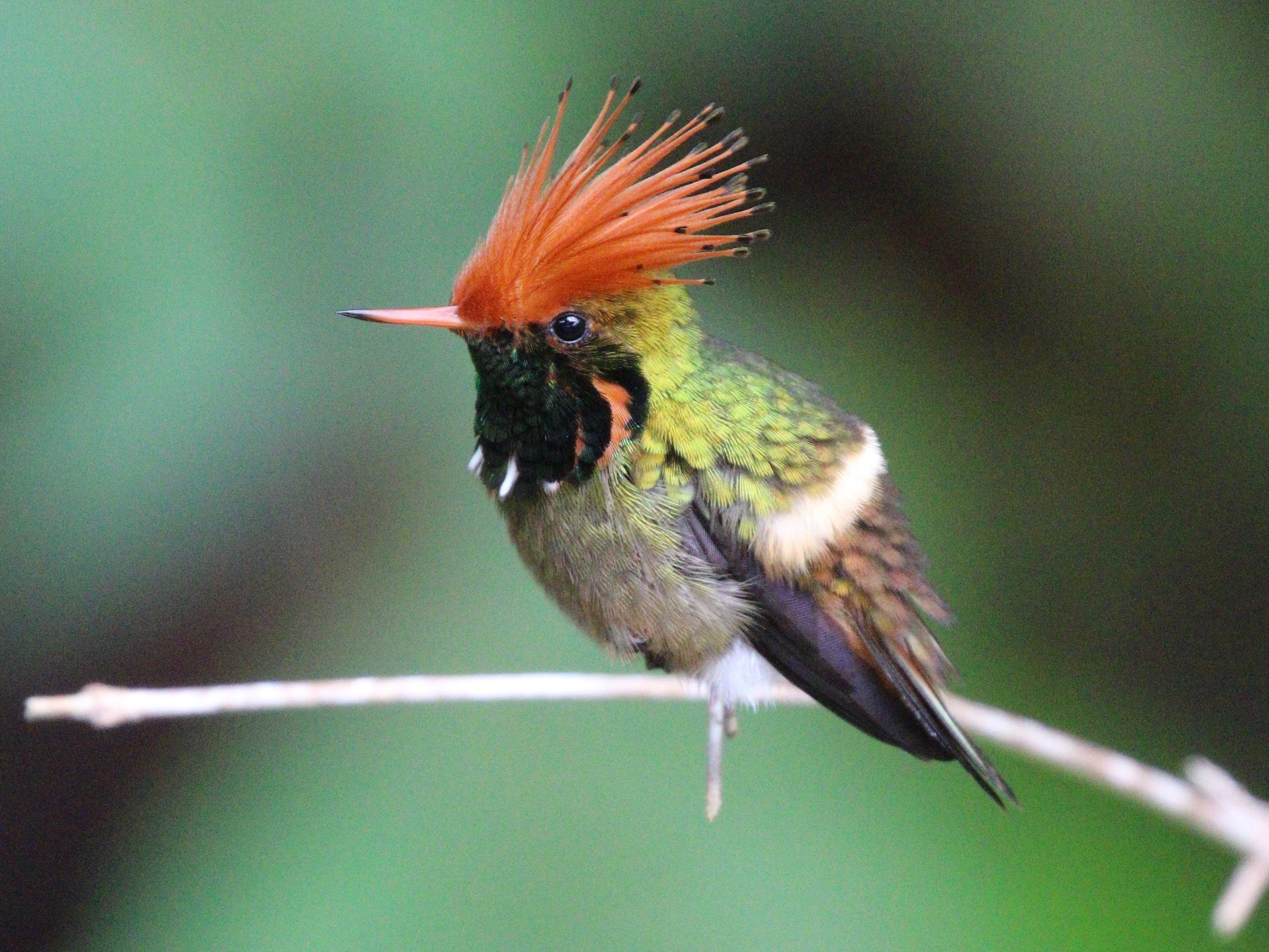Mesmerized by Rufous-crested coquette birds with graceful flight paths and eye-catching colors
Lophornis delattrei
The rufous-crested coquette is a species of hummingbird native to the tropical slopes of pacific South America. Due to its small size and population, it is a rare sight even within its native region. Males of the species can be easily distinguished by their striking rufous coloured spiked crests, and females, while less obvious, can be identified by their small size and rufous coloured foreheads.

Appearance
Rufous-Crested Coquettes are of 6.4 cm to 7.0 cm in length, have a wingspan of 4.0 cm to 4.5 cm, and have weigh an average of 2.8g. This species has a short orange bill that ends in a sharp blackened point. Its back and stomach is a light iridescent green.
A band of white feathers crosses the rump, and brown, orange, and green tail feathers extend posteriorly from it. The adult male has a crest of slender and rigid black tipped rufous feathers, that extend dorsally from its rufous coloured head feathers. It has a throat of darker iridescent green feathers which ends posteriorly in small pointed white feathers.

A vertical band of rufous feathers frames the green throat and tail feathers of the males, and the tail ends in a double-rounded shape. Female rufous-crested coquettes share a similar physiology to the males, with a few key defining differences. Females display no head crests, and instead their rufous coloured forehead feathers fade into the iridescent green ones which extend down their backs. Their throats are not uniformly green, but instead are primarily white with small clusters of green feathers.

A band of rufous feathers extends fully from the side of the throat up to the forehead. The tail of the female rufous-crested coquette is singly rounded, and the tail feathers, while primarily green, end in small patches of light orange.

Naming
An extremely similar species of coquette is endemic to a small region of Guerrero Mexico. This bird’s taxonomic classification is debated, and some ornithologists list it as the independent coquette species Lophornis brachylophus, but has also been classified as a subspecies of the rufous-crested coquette, L. d. brachylopha.

Distribution
The species inhabits the Pacific and Caribbean mountainsides of Peru, Bolivia, Colombia, Ecuador, Panama, and Costa Rica; and at least one observation of the species has been reported in western Brazil.

Status
The rufous-crested coquette is rare yet its populations appear stable, and the IUCN red list ranks this species as one of lest concern. While habitat loss due to deforestation is a major problem for bird species in South America, since the rufous-crested coquette feeds in open areas and forest clearings it is affected to a lesser degree.
Reproduction

While no mating or egg laying has been observed in this species to date, they do present a similar courtship ritual to other Coquette species. This ritual involves a male performing a series of lateral oscillating flights in front of a perched female, displaying its crest while doing so.
References:

Some text fragments are auto parsed from Wikipedia.